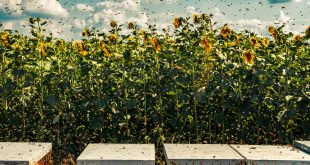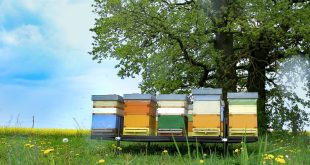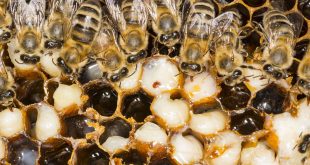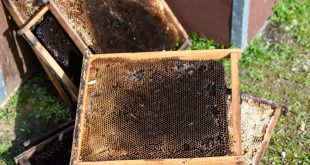Beekeeping for pollination has become an increasingly important practice worldwide. Historically, bees were mainly kept for honey production, with pollination being a secondary benefit. However, with the rise in agricultural fields requiring pollination and a decrease in natural pollinators, renting honeybee colonies specifically for crop pollination has gained prominence. This approach is widely adopted, not just in the United States but globally, with thousands of bee colonies rented for this purpose. This shift highlights the critical role bees play in supporting agriculture and the broader ecosystem by facilitating the pollination of a diverse range of crops.
Read More »What are Drone Congregation Areas?
Discover the intriguing world of Drone Congregation Areas (DCAs) in our detailed article. These areas, vital for honeybee colony sustainability, are where drone bees gather to mate with virgin queen bees. Unique to honeybees, DCAs are typically located high above the ground near bee colonies. The mating process is critical, with drones preparing for it by bulking up on nectar and pollen. Witnessing a DCA, which can stretch up to 650 feet in length and form a conical shape, is truly a natural marvel. Our article provides comprehensive insights into these fascinating aspects of bee behavior and ecology.
Read More »Wooden Beehives: All Natural Material Loved by Bees
Beekeeping methods adopted by across the world beekeepers varies immensely. This is attributable to the fact that the type or kind of beehive used has a huge impact on how honeybees are raised. There are so many types of beehives in use at the moment. Wooden beehives are particularly the most popular. If you have been wondering about the best wooden beehives for sale, then welcome aboard as we'll discuss just that in this article.
Read More »Apivar vs Apiguard Comparison Review
Varroa mite control in beekeeping is important to prevent losses and colony collapse. The Varroa mite attacks both adult bees and brood, though they tend to prefer the brood of drone bees. Left unchecked, Varroa mites will prey on worker bee brood as well. Beekeepers have a number of options to use in controlling honey bee mites. This article compares two popular mite control methods - Apivar vs Apiguard. There are various companies manufacturing and selling Apivar and Apiguard under varying trade names.
Read More »How to Get Rid of Hive Beetles – The Beginner’s Guide
Hive beetles are capable of causing a lot of destruction in beehives, resulting in massive losses on the part of the beekeeper. The beetles can cause your honeybee colony to get weak and swarm away from the beehive. As a beginner, you should want to know how to get rid of hive beetles, in the event that you are ever plagued with the pests. It will no doubt relieve stress on your honeybees and ensure a more fruitful beekeeping experience. You can prevent hive beetles from infesting your beehive using integrated pest management methods in a beehive. When these fail and your apiary suffers a hive beetle infestation, then it is time to take active measures to help your bees fight the invasion. These pests are generally classified into small hive beetles and large hive beetles.
Read More » BeeKeepClub Resources and Guides for Beekeepers
BeeKeepClub Resources and Guides for Beekeepers




